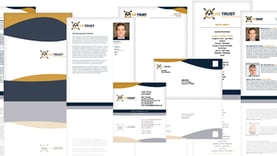One of the most engaging topics that I cover in my Social Security education class is the impact of taxes. Most attendees at my workshops don't know that their Social Security benefits may be subject to tax. Of those few who do know, many are unsure as to how it is determined, and how much tax they are likely to pay. After all, any income that goes towards paying taxes reduces what they can spend to maintain their lifestyle throughout retirement. As a financial professional, you should help each client create a strategy that maximizes the resources they have in retirement and minimizes their tax burden.

Provisional Income
Understanding how a client's provisional income is calculated is the key to understanding what percentage of a client's Social Security benefits will be subject to tax and what, if anything, can be done to reduce the impact of taxes on their Social Security benefits. There are four main components in the provisional income calculation.
They include:
- 50% of Social Security benefits
- Ordinary Income
- Other Taxable Income
- Tax-Free Income
Let's explore how each of these individual components impacts the taxes on their Social Security benefits.
50% of Social Security Benefits
We begin calculating provisional income by determining the Social Security benefits received for the calendar year. Then we divide that benefit by 50%. For a husband and wife filing jointly, you would combine both Social Security benefits and then divide by two. For example, if a husband and wife are each receiving a monthly Social Security benefit of $1,000 per individual per month, their household is receiving $24,000 of Social Security benefits annually. Half of their household Social Security benefits ($12,000) would be included in calculating their provisional income.
Ordinary Income
Next, we total all other taxable income. We’ll start with ordinary income. What’s ordinary income? If your client is employed and earning a paycheck, they are earning ordinary income. What if they are retired and no longer earning a paycheck? They still might be receiving ordinary income.
Distributions from retirement assets such as 401(k)s and IRAs are considered ordinary income. You can think of a 401(k) or IRA as an I.O.U. to the IRS. Why? Because the money contributed to these accounts -- along with any growth -- has never been taxed. As you know, your clients chose to defer all taxes until they took a distribution. Additionally, if your client is fortunate enough to have lifetime income from a pension, it is generally received in the form of ordinary income.
Considering the proliferation of defined contribution plans like 401(k)s and personal savings in traditional IRAs over the past three decades, when I work with prospects that attend my educational workshop, I find that most baby boomer's retirement income will likely be distributed as ordinary income. It is foreseeable that a household’s provisional income might soar rapidly as they distribute more and more assets in order to maintain their lifestyle throughout retirement.
Other Taxable Income
If a household owns after-tax savings and investments, there's a good chance they’ll also receive realized interest and capital gains, as well as dividends from those investments. Interest from checking, savings, and money market accounts as well as certificates of deposit are considered taxable income. Realized capital gains on investments that have been sold are also included, along with dividends earned from dividend-producing investments. All of this additional taxable income affects the household's provisional income.
Tax-Free Income
Municipal bonds are popular investments for retirees who desire tax-free retirement income. Interest earned from municipal bonds is generally federal income tax free, and potentially state income tax free, if the municipal bonds are purchased within your client's resident state. However, the interest income earned from municipal bonds is included in provisional income. The tax-free investment income from municipal bonds may contribute to the taxation of your client's Social Security benefits.
Thresholds
The thresholds for determining whether your client will pay taxes on social security benefits or not are relatively low. Even though the cost of living has increased over time, the thresholds haven't been changed in decades. For a single filer, the first threshold is only $25,000 of provisional income. For a married couple filing jointly, the first threshold is only $32,000. Once this threshold is surpassed, a portion of social security benefits will become taxable at the highest marginal tax bracket of the household.
For many retirees, staying below this threshold will be an increasingly difficult challenge. For some, maintaining their lifestyle and staying below the threshold will be nearly impossible. However, managing your client's provisional income may protect some of your Social Security benefits from being taxed at the next highest marginal tax bracket.
Non-Provisional Income
You may be wondering, are there any retirement income sources not included in provisional income? This is a question many workshop attendees and your clients will want to know. The answer is yes. Under current tax law there are a couple of sources that are not included in provisional income.
Roth IRAs
Distributions from Roth IRAs are not included in provisional income. Therefore, one strategy for reducing provisional income for pre-retirees who are thinking far enough in advance is to leverage Roth conversions. This strategy allows them to pay off their I.O.U. to the IRS in a controlled manner and on their terms. Clients often chose to convert those assets prior to electing Social Security benefits. Controlling when and how you pay taxes on your retirement assets is one strategy to reduce your provisional income in retirement.
Cash Value Life Insurance Distributions
Distributions from cash value life insurance may also avoid inclusion in provisional income. Under section 7702 of the Internal Revenue Code (IRC) distributions from a properly structured and funded cash value life insurance policy are free from federal income tax, and would not be included in calculating provisional income.
Advanced strategies are necessary in order for a comprehensive retirement income strategy to take advantage of either or both of these tactics. Pre-retirees should begin to strategize when and how their taxable retirement assets will be distributed at least 5 to 10 years before their desired retirement date. Unfortunately many workers put off thinking about their retirement income, making it nearly impossible to enjoy significant benefits from implementing these strategies.
Creating the Most Efficient Plan for Clients
Retirement income strategies are a complex dance between retirement resources including income and assets, inflation-adjusted expenses, various rates of return, taxes, and entitlement benefits such as Social Security and Medicare. Provisional income is one of many considerations in order to optimize a retirement income strategy.
While it may become increasingly more difficult to pay no taxes on Social Security benefits due to a low threshold, proper strategies may significantly reduce the percentage of your client's Social Security benefits that are subject to tax, and the tax rate that will be applied.
In the end, it's all about putting more spendable income into the household and losing less to taxes as a result of incomplete strategies. Our clients are real people who need real income to buy real things in retirement. Strategies that will minimize the impact of taxes, fees, and marketable investment losses, often result in more money for clients to spend so they can enjoy and maintain their lifestyles throughout retirement.
If you want to work with one new small-business owner and their employees each month, check out this program. In this OnDemand webinar, we're unveiling our secrets to cracking the corporate door and showing you how we put you in front of one new small-business owner each month so you can promote financial wellness and promote individual life insurance and annuities to their employees.
FOR PRODUCER USE ONLY. NOT FOR USE WITH CLIENTS.
This material may contain a general analysis of federal tax issues. It is not intended for, nor can it be used by any taxpayer for the purpose of avoiding federal tax penalties. This information is provided to support the promotion or marketing of ideas that may benefit a taxpayer. Taxpayers should seek the advice of their own tax and legal advisors regarding any tax and legal issues applicable to their specific circumstances.






